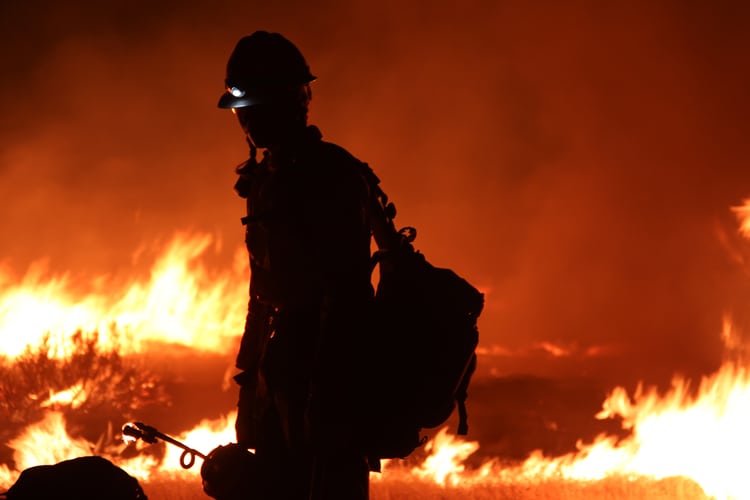With the onset of the Big Horn and Tortolita wildfires in Pima County, Banner – University Medicine experts share tips on how to protect yourself, family and pets from smoke and reduce exposure.
Due to the smoky conditions caused by the wildfires currently burning in Tucson, it’s important for residents to reduce their exposure to smoke.
Wildfire smoke is an irritant to eyes, nose, throat and lungs both for people and pets. “It can also make it hard to breathe and induce a cough or wheeze,” said Kevin Marr, Banner – University Medicine Tucson director of respiratory care, vascular access, rehabilitation, neurodiagnostics, audiology and sleep services.
Children, pregnant women, older populations and people with asthma, chronic obstructive pulmonary disease (COPD), diabetes or heart disease, need to be especially careful about breathing wildfire smoke, said Bellal A. Joseph, MD, Banner – University Medicine Tucson chief of the Division of Trauma, Acute Care, Burn and Emergency Surgery and University of Arizona Martin Gluck professor of surgery.
Smoke is made up of a complex mixture of gases and fine particles produced when wood and other organic materials burn. “The biggest health threat from smoke is from fine particles,” said Marr.
According to the Environmental Protection Agency, these fine particles can penetrate deep into your lungs and cause a range of health problems, from burning eyes and a runny nose to aggravated chronic heart and lung diseases. Exposure to particle pollution is even linked to premature death.
Also, inhaling carbon monoxide decreases the body’s oxygen supply. This can cause headaches, reduce alertness and aggravate a heart condition known as angina. “During increased physical exertion, cardiovascular effects can be worsened by exposure to carbon monoxide and particulate matter. Once exposure stops, symptoms from inhaling carbon monoxide or fine particles generally diminish but may last for a couple of days,” said Dr. Joseph.
What to expect and do during a fire
Be on alert: People might experience health symptoms from smoke, heat, fire and odors associated with the fire, even when visible smoke may not be present.
Speak with your doctor to protect yourself: If you have heart, diabetes, vascular or lung disease, including asthma, talk with your health care provider to make plans. Discuss when to leave the area, how much medicine to have on hand, and your asthma action plan if you have asthma. For emergencies, always call 911.
Stay informed: People near the fire should follow the advice of first responders. In some cases, evacuation boundaries will be announced, and people will be given instructions on where to go during the event. In other cases, people may be advised to “shelter in place” (i.e., remain at home and keep doors and windows closed). See fire tracking resources below:
• Pima County Emergency Alerts
• Pima County Emergency Alerts Facebook
Keep track of fires near you so you can be ready:
• AirNow’s “Fires: Current Conditions” page external icon has a map of fires throughout North America
• NOAA’s “Fire weather outlookexternal icon” page maps fire watches and warnings.
Reduce exposure to smoke: During a fire, the doors and windows should remain closed to prevent smoke from entering. A respirator is a mask that fits tightly to your face to filter out smoke before you breathe it in. If you have a central air conditioning system, use high efficiency filters to capture fine particles from smoke. If your system has a fresh air intake, set the system to recirculate mode or close the outdoor intake damper.
Evacuate safely: You may be asked by public authorities to evacuate or you may decide to evacuate. Read about how to evacuate safely and how to develop a family disaster plan, including:
• Find out what could happen to you
• Make a disaster plan
• Complete the checklist
• Practice your plan




